Hiking through the woods is always a fun way to relax and explore nature. There are so many things to find, ranging from colorful insects to massive rock structures. Finding a nice place to lay down and have some lunch in the middle of your hike is a must, and some of the best places to do this are by a lake or in a sunny meadow. The smell and color of the flowers, or the quietness on the shore of a lake makes for an excellent rest stop.
Lakes shimmer in the sunlight as the ripples in the water hit the shoreline. Using different chemicals, you can make what is known as a "lake", because it resembles these ripples. As the liquid (normally a stain or dye dissolved in alcohol or water) evaporates, it leaves behind many of the impurities within it. This forms a unique pattern of solids that form wavy lines around the edge of the stain. This is what makes it a "lake". In this two level photo, you can see the progression of crystal violet as it evaporates off a slide. It leaves behind small chunks of solid impurities that make the dark, wavy lines.

There are many different types of flowers and plants that grow in meadows, and up close the cell structure can be seen very clearly. This photo is of a paperwhite petal. Paperwhites are a flower in the same genus as daffodils, but significantly smaller. They are common as house plants, with very thin, white petals, hence the name. When the petal is immersed in an oil, the cells are filled, and this makes the petal translucent, which allows a microscope to see into it. This photo was also inverted to bring out the cell structure, showing the long rows of rectangular cell walls.
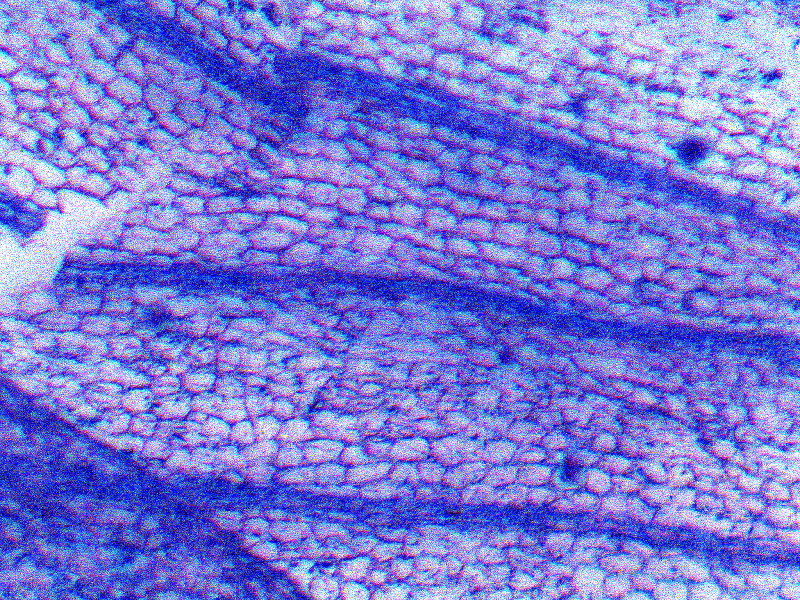
Another stain that creates nice lakes is pyronine. This is a blood red dye, which is also very prone to being impure. The reason many of these biological stains are impure is due to their production. These molecules are often quite large, and form some byproducts which are quite difficult to remove. In pyronine, the impurities form a green, iridescent sheen when dried out, making the lakes rather unique.

This picture is also of pyronine, and it shows the very edge of the lake, where most of the iridescent layer has been deposited.
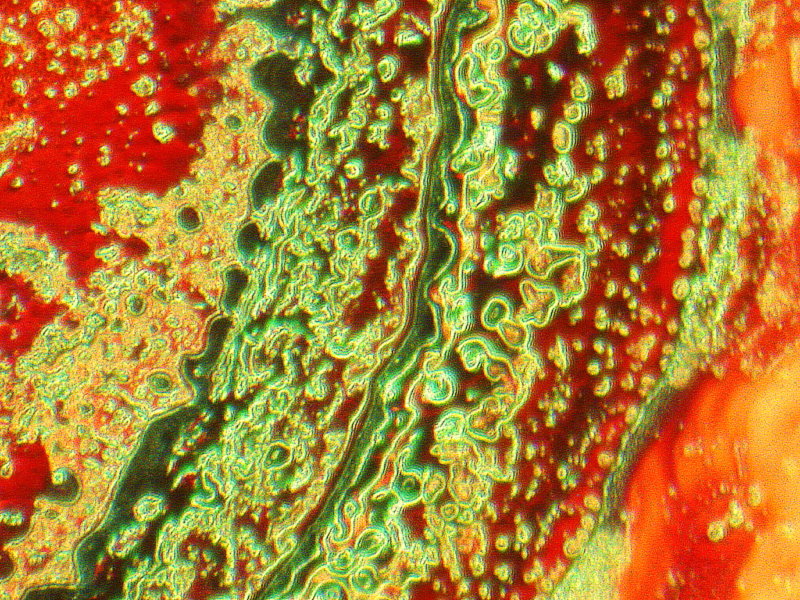
Another way to prepare flower petals is by immersing using stains instead of oils. This takes longer to fill the cells in the specimen, but can highlight different patterns within the structure of the plant. In this photo, crystal violet has been used to stain another paperwhite petal. The edges between the rows of cells have been stained a deep burgundy color, while the rest stayed a light lilac color.
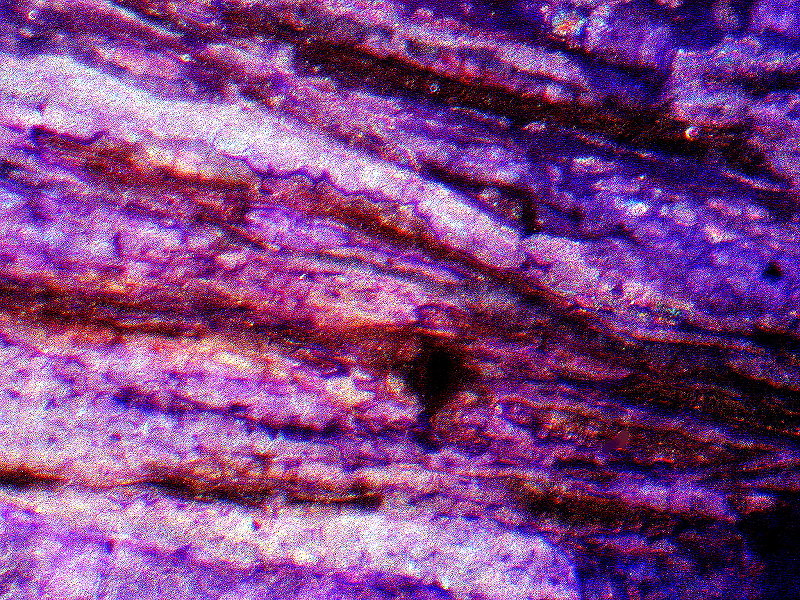
The final dye I used to create lakes was methylene blue. This is another stain with many impurities, but it created different results than the other two. It left clumps of solids as it evaporated, rather than waves. These clumps had different green and yellow colors that created a nice pattern. With a darkened background and enhanced color, it almost looks like an asteroid belt in space than a lake.
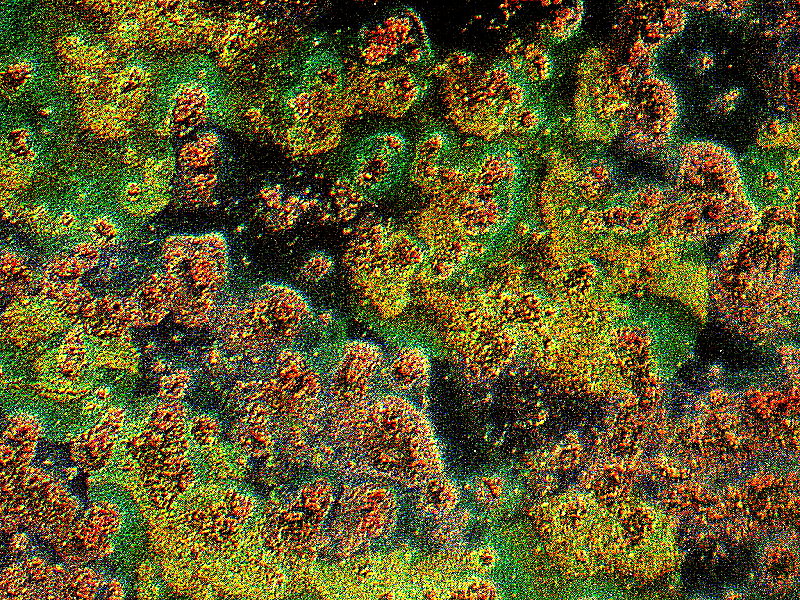
The final pictures are of a part of flowers that causes millions of people distress each year. This is pollen from an Alstroemeria or “Peruvian lily”. The pollen forms on the anthers of a flower, which are at the end of the stamen, the long antennae-like structure protruding from the center of a flower. The pollen in these pictures was collected by simply brushing it off, which is one of the reasons pollen allergies are so common in fall and spring, when certain plants start reproducing (first by pollination). The pollen needs to be able to fall off easily to spread in the wind, or with the help of bees and other insects, to other flowers to fertilize them. This one sort of looks like falling autumn leaves.
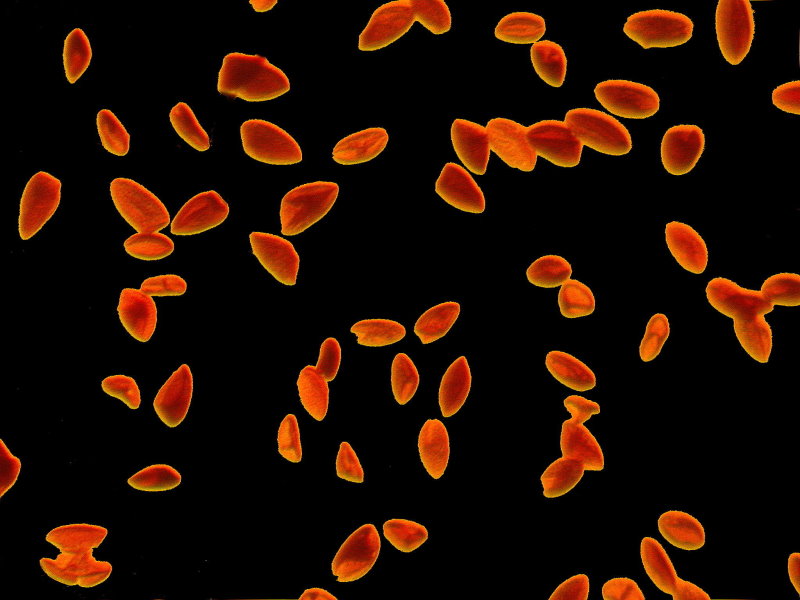
Each of these pictures was made by immersing the pollen in cedarwood oil, a nice smelling essential oil from conifer trees. This bound the pollen together to allow pictures to be taken, without the risk of the pollen flying away. This image was also inverted to showcase different structures within the pollen granules.
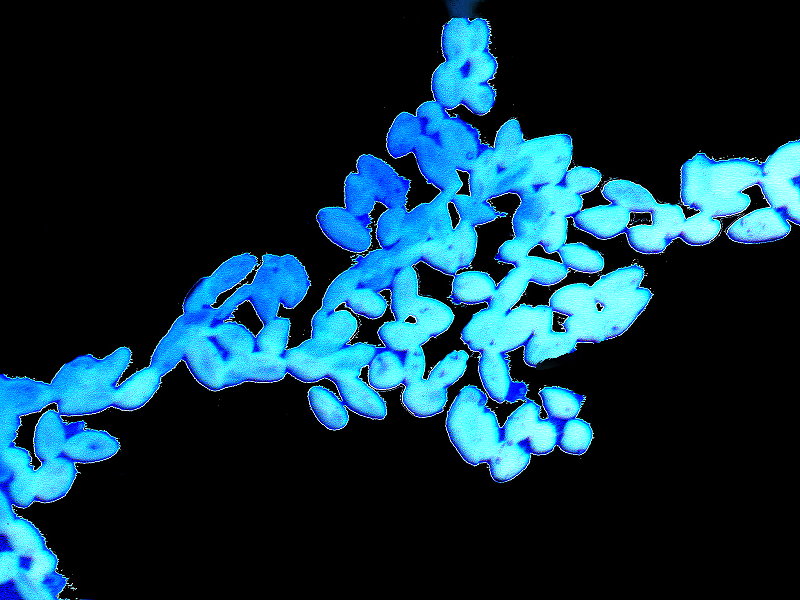
Finding specimens to photograph using these staining techniques was certainly an interesting process, and with more work and practice, even better slides can be created. The possibilities are endless, with so many combinations of plants and stains that can be combined. The “lakes” formed by the stains are also unique, and the way they can create something natural looking, is incredible.
All comments to the author Sawyer Wynn via Richard Howey
are
welcomed.
If email software is not linked to a browser, right click above link and use the copy email address feature to manually transfer.
Editor's note: Visit Richard Howey's new website at http://rhowey.googlepages.com/home where he plans to share aspects of his wide interests.
Microscopy UK Front
Page
Micscape
Magazine
Article
Library
© Microscopy UK or their contributors.
Published in the February 2022 edition of Micscape Magazine.
Please report any Web problems or offer general comments to the Micscape Editor .
Micscape is the on-line monthly magazine of the Microscopy UK website at Microscopy-UK .
©
Onview.net Ltd, Microscopy-UK, and all contributors 1995
onwards. All rights reserved.
Main site is at
www.microscopy-uk.org.uk .